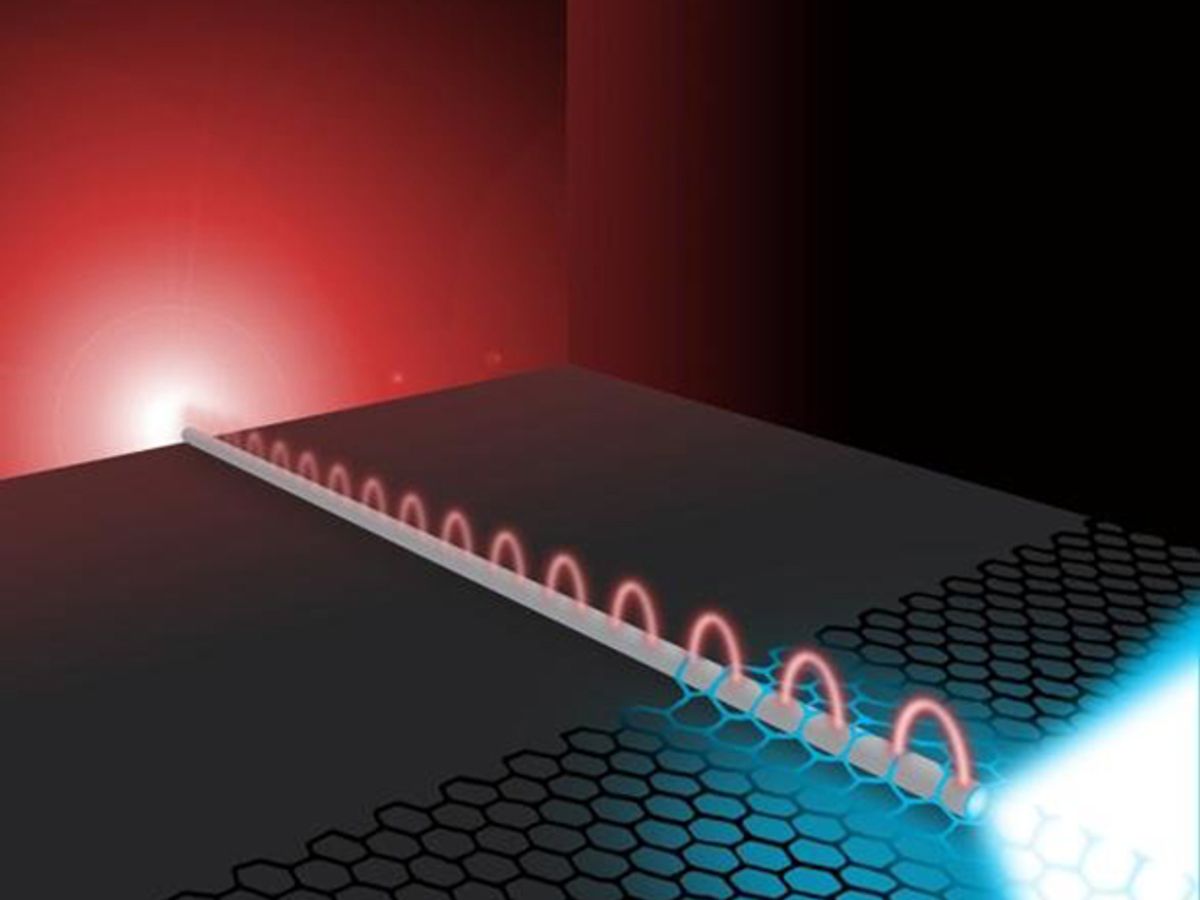Last year, we covered joint research between the University of Rochester and the Swiss Federal Institute of Technology in Zurich in which a primitive circuit consisting of a silver nanowire and single-layer flake of molybdenum disulfide (MoS2) was developed that could guide both electricity and light along the same wire.
Now researchers at the University of Rochester are continuing their work with nanowires and MoS2 to create a nanoscale photodetector that the researchers believe could be a step towards a new type of photonic circuit.
"Our devices are a step towards miniaturization below the diffraction limit," said Kenneth Goodfellow, a graduate student at the University of Rochester, in a press release. "It is a step towards using light to drive, or, at least complement electronic circuitry for faster information transfer."
The latest research results expands upon last year’s work that demonstrated that light could be transmitted along a silver nanowire as a plasmon, which are rapid oscillations in electron density. The plasmons are re-emitted at the other end of the nanowire, which is covered with the MoS2.
When the light was re-emitted, its wavelength corresponded with the band gap of the MoS2 as well as the wavelength of the laser source. This demonstrated to the researchers that the plasmons were able to push the electrons in the MoS2 into a different energy state.
Based on these findings, the researchers wanted to see if the device could serve as a photodetector.
To accomplish this, the team again took their nanowires with one end coated in MoS2 and put it on a silicon substrate. Next, they put metal contacts on the end with the MoS2 using electron beam lithography. They then set it up so they could measure the current running through it.
They discovered that the current running through the wires was sensitive to the polarization of the incoming light. The current was the strongest when the light was polarized parallel to the wire.
The researchers also observed that the device’s performance at the shorter wavelengths of light was limited due to poor plasmon propagation. At the longer wavelengths of light, the same problem occurred due to the band gap of the MoS2.
While the researchers concede this is only preliminary work towards the development of new photonic circuits, it does offer a foundation to build from.
Dexter Johnson is a contributing editor at IEEE Spectrum, with a focus on nanotechnology.



